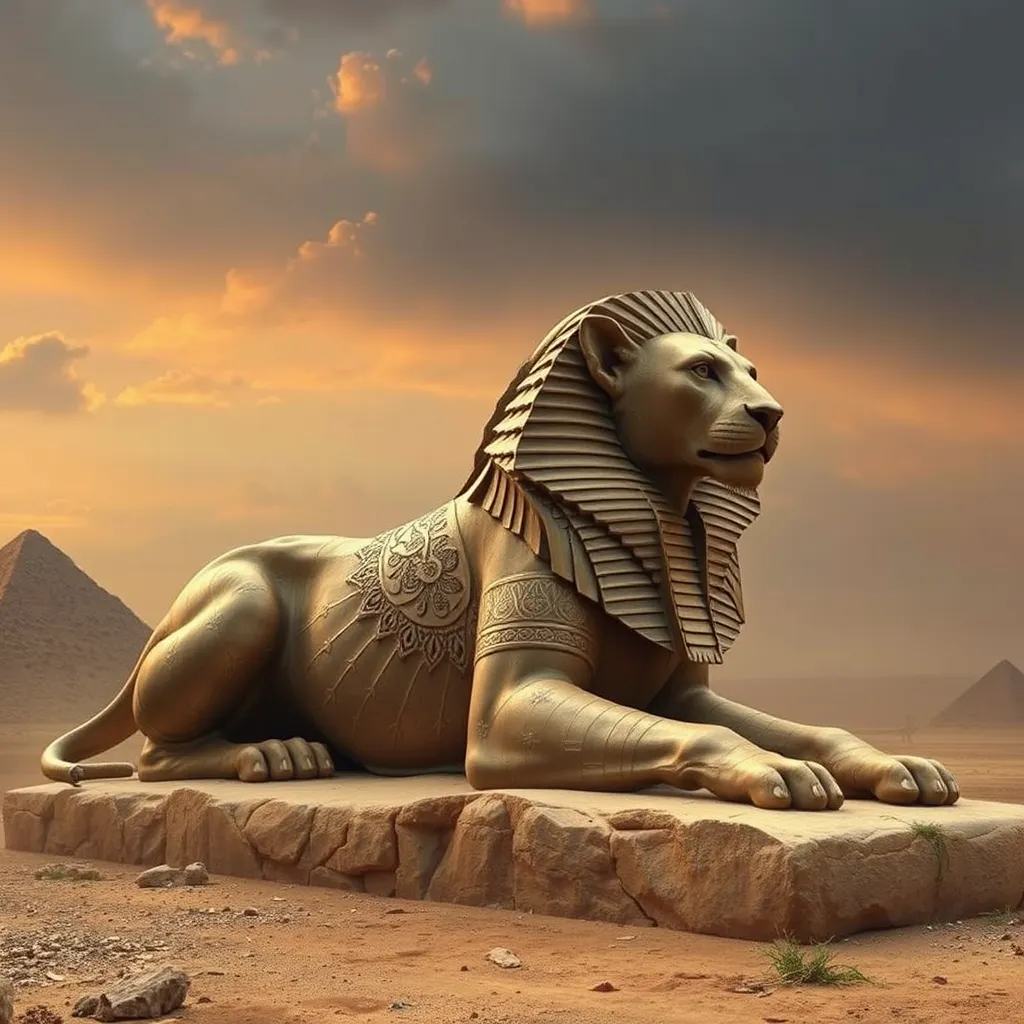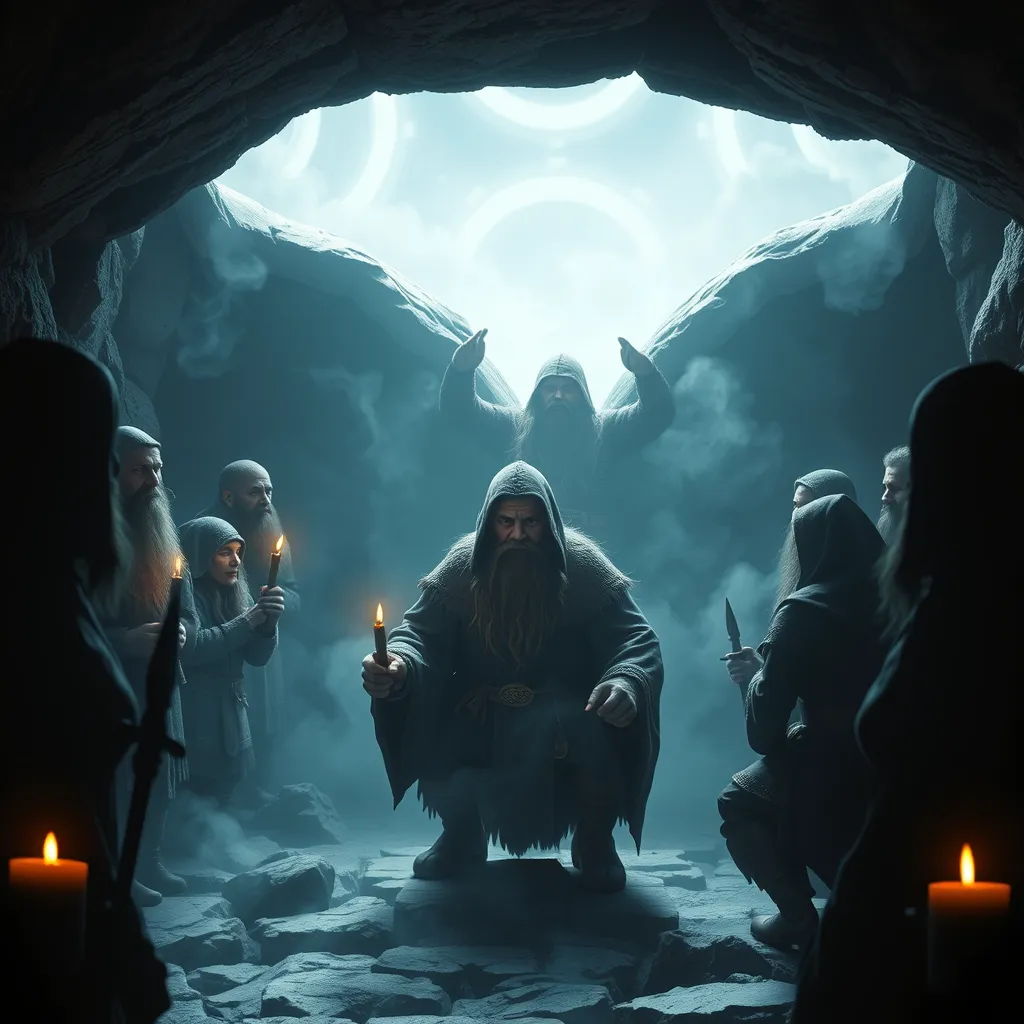The Hidden World: Ifrit and the Realm of the Unseen
I. Introduction
The Ifrit, a powerful and enigmatic figure in mythology, holds significant importance across various cultures, particularly in Middle Eastern folklore. Often depicted as a fiery spirit, the Ifrit embodies both the beauty and terror of the supernatural world. This article delves into the concept of the unseen realm, a mysterious space that intersects with our everyday lives, and explores the connections between the Ifrit and this hidden domain.
The unseen realm is often defined as a metaphysical space that exists parallel to our physical reality, inhabited by spirits, deities, and otherworldly beings. It is a realm that is invisible to the naked eye yet profoundly influences the lives of those who believe in its existence. The purpose of this article is to explore how the Ifrit serves as a bridge between the seen and unseen worlds, revealing the depth and complexity of human beliefs and fears.
II. Origins of Ifrit in Mythology
The origins of the Ifrit can be traced back to ancient texts and folklore, particularly in Arabic literature. The term “Ifrit” is derived from the Arabic root word “afara,” which means to conceal or hide, highlighting its connection to the unseen. In pre-Islamic Arabian culture, Ifrits were often viewed as formidable beings that could either assist or harm humans.
Ifrits appear in various cultures and traditions, often taking on different attributes based on the local beliefs. In Islamic tradition, Ifrits are considered a type of jinn, supernatural creatures created from smokeless fire, possessing free will and the ability to influence the human world. The evolution of the Ifrit archetype has been influenced by cultural exchanges and interpretations throughout history, leading to a rich tapestry of stories and representations.
III. Characteristics and Attributes of Ifrit
Ifrits are characterized by their powerful and sometimes terrifying presence. They are often described as large, fearsome beings with a fiery appearance, capable of great destruction. However, they also possess wisdom and knowledge that can guide humans in their spiritual journeys.
- Physical Traits: Ifrits are typically depicted as being larger than humans, often with glowing eyes and the ability to transform into various forms.
- Supernatural Abilities: They possess powers of invisibility, flight, and control over fire, making them formidable entities.
- Gender and Identity: Ifrits can be male or female, and their gender identity often reflects the cultural beliefs of the societies that depict them.
In different mythological contexts, Ifrits may vary in their moral alignment. Some are viewed as benevolent protectors, while others are seen as malevolent tricksters. This duality adds to the complexity of the Ifrit archetype, making it a subject of fascination and fear.
IV. The Unseen Realm: An Overview
The unseen realm is a concept that transcends cultures and religions, often associated with the spiritual world and the afterlife. It is a space where spirits reside, where dreams originate, and where divine beings interact with humans. Cultural interpretations of the unseen realm vary widely, but common themes include:
- The existence of spirits and ancestors watching over the living.
- The belief in an afterlife where souls reside after death.
- Connections to nature and the elements, often seen as bridges to the spiritual world.
The unseen realm plays a crucial role in folklore and mythology, often serving as a backdrop for moral lessons, cautionary tales, and spiritual guidance. It is a space where the laws of nature may be bent, and where the impossible becomes possible.
V. Ifrit as a Guide to the Unseen
In many traditions, the Ifrit serves as a mediator between the seen and unseen realms. Their dual nature allows them to navigate both worlds, making them powerful symbols of knowledge and protection.
The symbolism of the Ifrit as a guide is evident in various spiritual practices and rituals. They are often called upon in times of need, providing assistance in navigating life’s challenges. Tales of encounters with Ifrits in the unseen realm abound in folklore, often highlighting their role as protectors or tricksters depending on the context of the story.
VI. The Psychological and Cultural Significance of Ifrit
The Ifrit represents more than just a mythological figure; it embodies human fears, desires, and the quest for understanding the unknown. In many ways, Ifrits reflect the darker aspects of humanity, serving as a reminder of the fears we face in our lives.
The impact of Ifrit on literature and popular culture is profound. From classic tales like “One Thousand and One Nights” to modern interpretations in films, books, and video games, the Ifrit continues to captivate audiences. This enduring presence highlights the ongoing relevance of the Ifrit in contemporary society, often representing the struggle between light and dark.
VII. The Intersection of Reality and Fantasy
Ifrits challenge our perceptions of reality, blurring the lines between the seen and unseen. They invite us to explore the mysteries of existence and question the boundaries of our understanding.
The influence of Ifrit on modern media is significant, with representations of these beings appearing in various formats:
- Films: Ifrits often appear as antagonists or powerful allies in fantasy films.
- Books: Literature frequently explores the themes of jinn and Ifrits, weaving them into complex narratives.
- Games: Many video games feature Ifrits as characters or entities that players can interact with, often drawing on their mythological roots.
VIII. Conclusion
In conclusion, the Ifrit serves as a significant figure in the exploration of the unseen realm, representing the complexities of human nature and the mysteries that lie beyond our perception. As we reflect on the ongoing relevance of the Ifrit in modern culture, it becomes clear that these beings continue to inspire curiosity and caution.
Embracing the mysteries of the hidden world invites us to confront our fears, understand our desires, and engage with the spiritual dimensions of our existence. The Ifrit, as a symbol of the unseen, reminds us that there is much more to life than what meets the eye.



